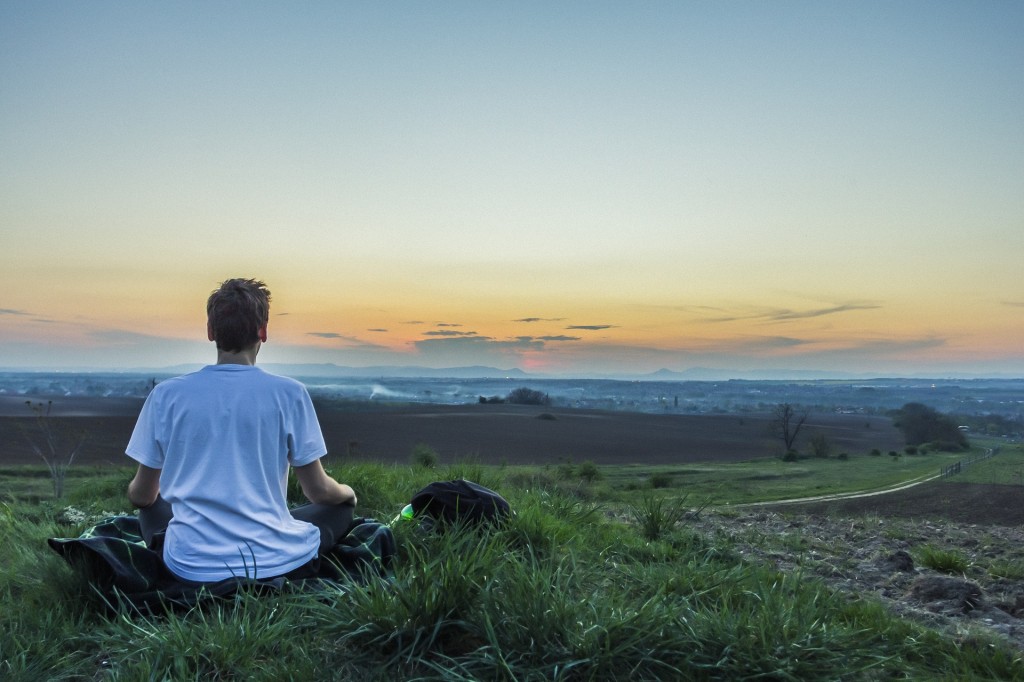A few years ago, I herniated a disc. Of course, everyone knows that disc issues are painful but from my experience, nothing can describe what it actually feels like.
It started with an ache in my back. Then there were shooting pains down my leg. Once when I tried to stand, I almost fainted. I’d break into a sweat getting in and out of the car and it was a monumental effort not to moan when I was near my kids.
How did I cope?
I meditated on it.
I watched how my pain moved from one part of my body to another and how it changed during the day. I became curious about what increased it and what decreased it.
But it was hard.
Meditating on my pain brought it into sharp focus. There was no escaping it.
Few people can go through their life and escape pain, and it’s logical to turn to meditation to help. Meditation helps you relax, calms the nervous system, and improves your outlook. All of these things are a good antidote to pain.
But if you’ve ever tried to meditate while you’re in pain, you probably noticed that it’s not easy. Meditating with pain can intensify it, so much that you want to jump out of your skin. It can set up an internal battle with your own body.
So how do you do it? How do you meditate on pain?
Ground Rules for Pain Meditation
Before you begin, you need some ground rules.
1. Get Comfortable
Your first rule is to get as comfortable as you reasonably can. If your back hurts, try meditating lying down with a pillow beneath your legs. If your hips hurt, find a comfortable chair. This is a time for kindness to yourself. Don’t muscle through your meditation.
2. Know When You Can’t Meditate on Pain
Your second rule is that sometimes, you just can’t meditate on pain. You may be kinder to yourself (and more successful) if you distract yourself for a while. There’s no shame, no failure if you can’t stay with it. Sometimes, you just need relief.
3. Know How to Rest from the Pain
And finally, you need a resting meditation.
If you are a longtime meditator, you probably have at least one technique which is relatively “easy”. Perhaps you focus on the breath, maybe you sit in open awareness—it doesn’t matter what it is. You need a technique which feels soft, familiar, and accessible.
If you’re not a longtime meditator, you can find your resting meditating by focusing on something that doesn’t hurt. For example, when my back was screaming at me, my arms didn’t hurt. I would focus on the sensations in my arms that were not pain.
It brought relief from the storm.
How to Meditate on Pain
Sit or lie in a position which is relatively comfortable. Close your eyes and allow your body to relax. You may notice that relaxing is hard and that your body is tense from the pain.
That’s perfectly natural. Allow the parts that can relax to soften and allow the other parts to be exactly how they are.
After you have settled, bring your awareness to the pain. Notice the sensations. Is the pain hot or cold? Sharp or throbbing? Constant or pulsing? Try to have an open curiosity about the pain, as if you were noticing it for the first time. What do you discover?
If the pain feels too much, shift your attention to your resting meditation. Use a technique which is easy and comfortable, or bring your attention to some part of your body that doesn’t hurt. Remember to breathe naturally and to soften the parts of your body that you can release.
When you feel revived, you can bring your attention back to the pain.
This cycle can last as short or long as you like. Sometimes, fully experiencing the pain for even a few moments can feel overwhelming. In that case, your meditation can be very brief. Other times, you can continue like this, focusing on the pain, focusing on non-pain, back and forth for several cycles.
Because a formal meditation practice can be difficult during these times, you can use this awareness throughout your day. You don’t need to be officially “meditating” to do it. When I had to sit at a desk and my back sent waves of pain through my body, I’d do a mini-meditation at my desk.
Getting to know my pain helped me accept it—not because I became more used to it or found a silver lining that gave the pain a positive meaning.
Instead, getting to know my pain made me see it as just another experience in my life. Even if it was extremely uncomfortable, it wasn’t good or bad. It was just part of living.
The next time you have pain, even small, manageable discomfort, try meditating on it. Practice experiencing the sensations in your body.
Julia Rymut is a yoga and Pilates instructor in Madison, WI. For more information on finding happiness through embodiment, visit TaraTrue.com.




Great article on healing pain through mediation and mindfulness. Thanks!
Thanks, Grace. I’m glad you enjoyed it.
This is brilliant. I’e been experiencing back pain for 2 years after a minor muscle damage, and just this week my back has relapsed, I don’t think it’s as serious as a slipped disc but it’s still unbelievably painful sometimes. This article will help with my daily practice and giving me more of an insight on how to approach dealing with pain during meditating.
Thank you for this. I haven’t been meditating for a while due to severe headaches. Just this week I had the desire to go back to my practice. I’ve missed it and knew I needed a different structure/technique to help me take that step. Your description of how to meditate with pain makes a lot of sense to me so I will use it and let you know what happens.
Hi Dave,
I’m so sorry to hear about your back but I’m glad that you found some of these ideas helpful. Keep us posted on what you discover. A painful back gives you lots of sensation to practice with.
Hi Jean,
Please do get back to us with any discoveries (or if you have any questions). It may be a comfort if you could return to the practice you miss, even if you have headaches. Good luck and keep us updated.
I am very glad just by reading this blog. This post is very important for meditation. How can you do meditation at the time of pain? All great tips are explained here, so this post is very important for yogi. Thanks so much for sharing this blog.
I’m glad it’s helpful, Mark.
Meditation can alternatively help in healing chronic pain and diseases, it doesn’ t require any specific place but we can do it wherever we are!
Good point, Jasmine. You can do “mini meditations” wherever you are–standing in a grocery line, walking the dog, waiting at the doctor’s office… You can meditate anywhere.
Even if you can’t sit properly or have a good posture, don’t worry just lie on your back then close your eyes, this type of meditation will help you as you got only to listen to sounds.
Lying on your back is a great way to meditate if you’re in pain. And listening to sounds is a good “resting meditation” for many people. I’m glad it works for you, Lilie.
But people needs to know when there are disturbances with the nature, we can never get concentrated so it’s better to stop meditation and give full rest to the body.